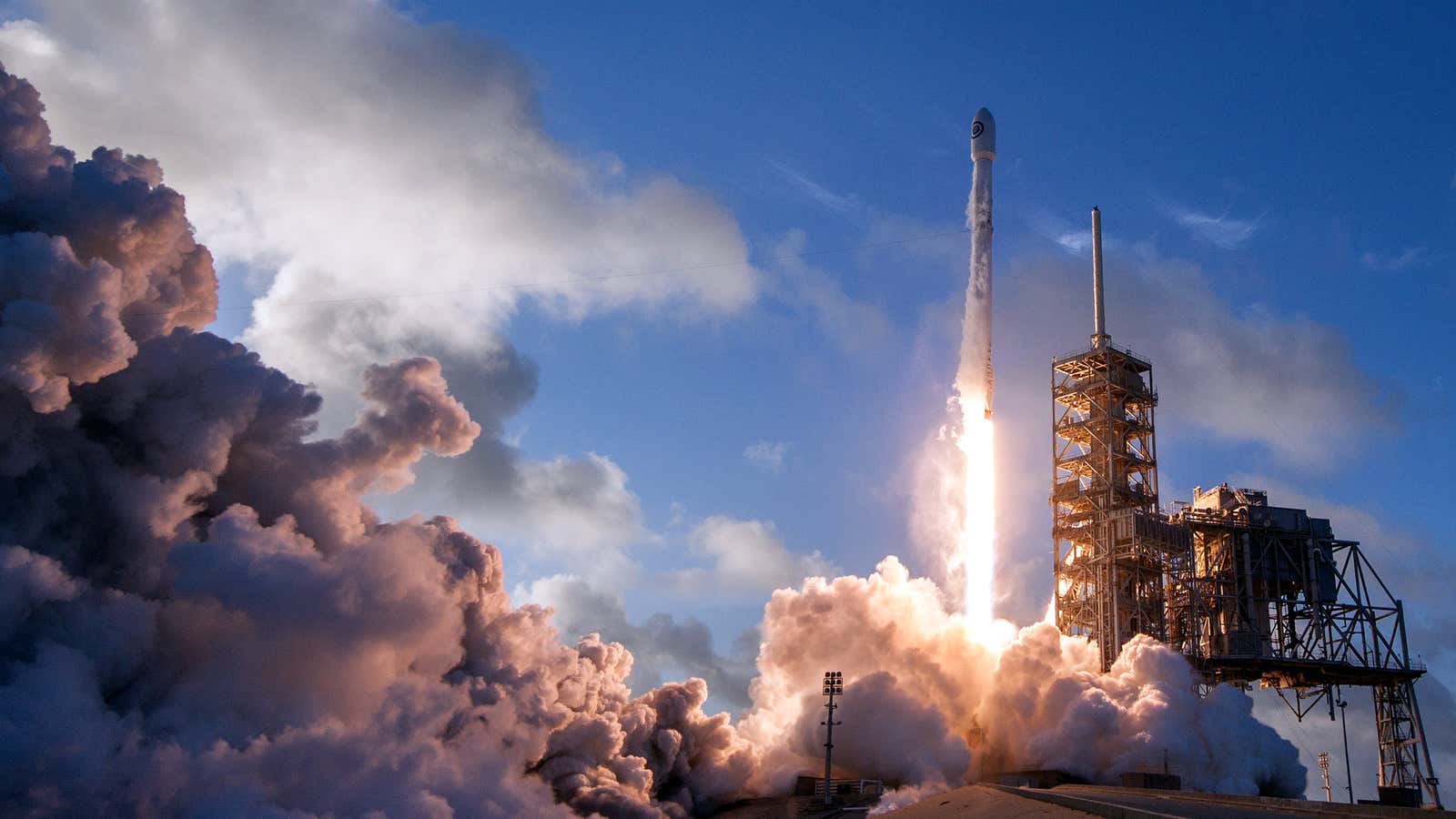Elon Musk’s rocket company aims to put a satellite called GovSat-1 into orbit to control NATO surveillance drones, among other top secret projects. Update: The launch has been delayed one day, until Jan. 31 at 4:25 ET, reportedly to replace a component in the rocket.
This is SpaceX’s second launch of 2018; SpaceX’s previous flight attempted to launch a classified satellite called Zuma, but it failed to separate from the rocket and enter orbit. Despite anonymous criticism, the US Air Force said SpaceX’s rocket performed as expected.
This mission will re-use a Falcon 9 rocket booster that last launched a satellite in May 2017. This time around, though, the booster will be discarded instead of returning for a landing:
While the Falcon 9 would be expected to have enough fuel to return for a landing after launching the four metric ton satellite toward its orbit, more than 35,000 kilometers above the surface of the earth, a recovery would require catching it on the company’s drone landing ship. SpaceX is skipping that process this time because it wants to keep its drone ship ready for next week’s debut launch of the Falcon Heavy rocket. The company is also planning on rolling out an upgraded version of the Falcon 9 booster this year.
The payload for today’s mission is the first satellite in a joint venture between SES, the European satellite giant, and the government of Luxembourg, known as GovSat. It is designed to serve NATO, using specific frequencies reserved for government purposes and downlinking communications through secure facilities where workers come equipped with security clearances.
The first contract for GovSat-1 is providing a communications link to five Global Hawk drones purchased by NATO to provide aerial surveillance of military and humanitarian operations.
The satellite’s institutional focus, though it is privately operated, is a reminder that the big patron of all space business remains governments and particularly national security organizations. Increasing private investment and lower costs to access space are slowly pushing the needle away from this model.
This flight will be the sixth time that SpaceX has re-used a “flight proven” rocket booster. It is the only company in the world operating reusable orbital launch vehicles, and that distinction helps it offer the lowest prices on the private rocket market. However, the full extent of the savings remains unclear, and the company is still far from its goal of 24-hour turn-around between missions. Last year, the company flew 18 missions.
